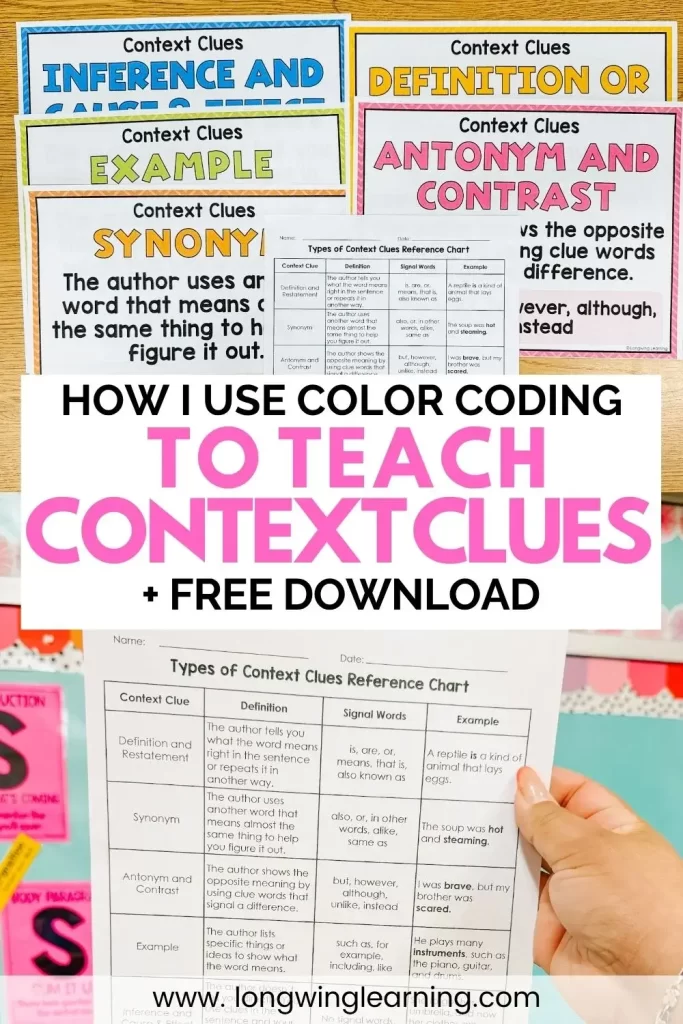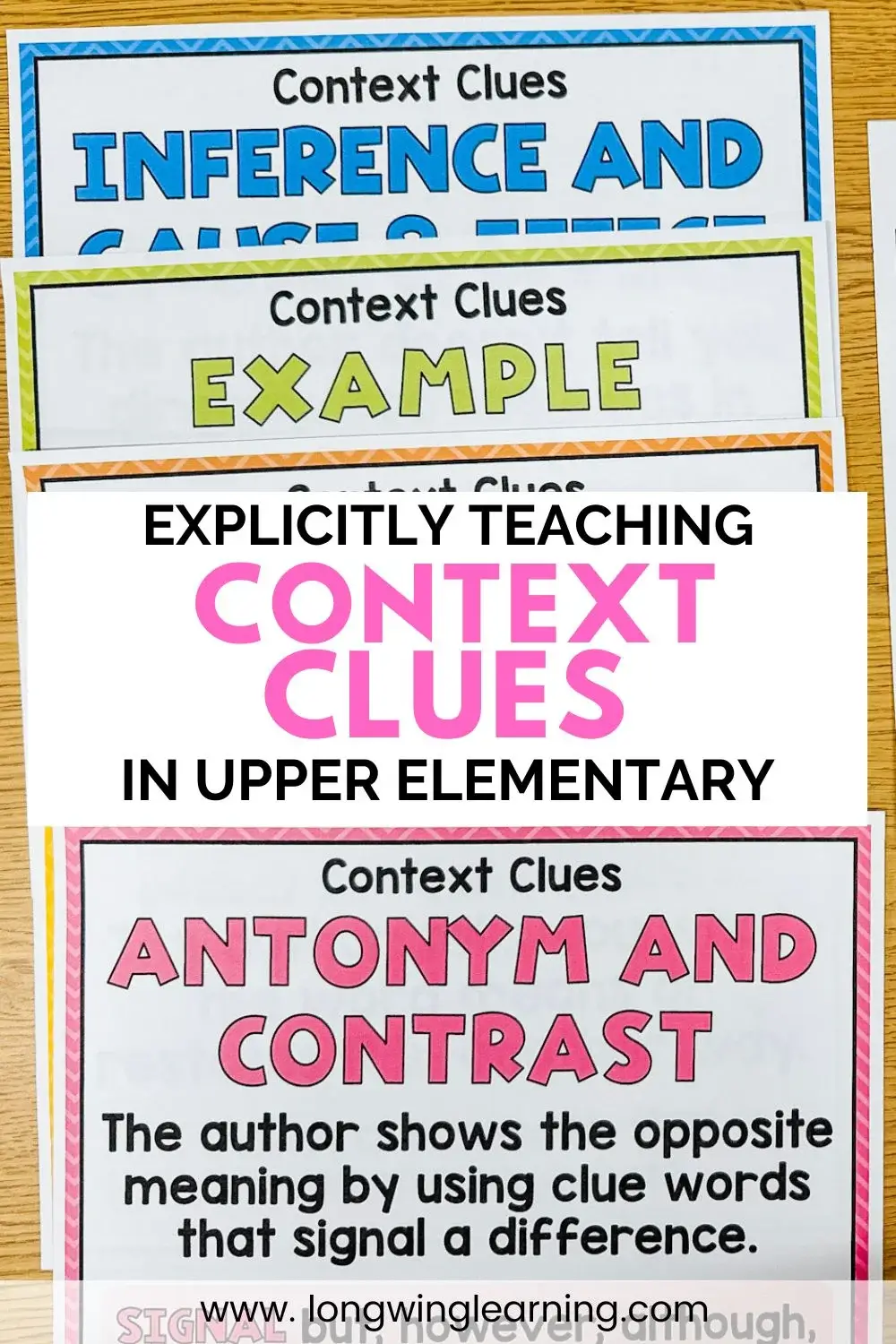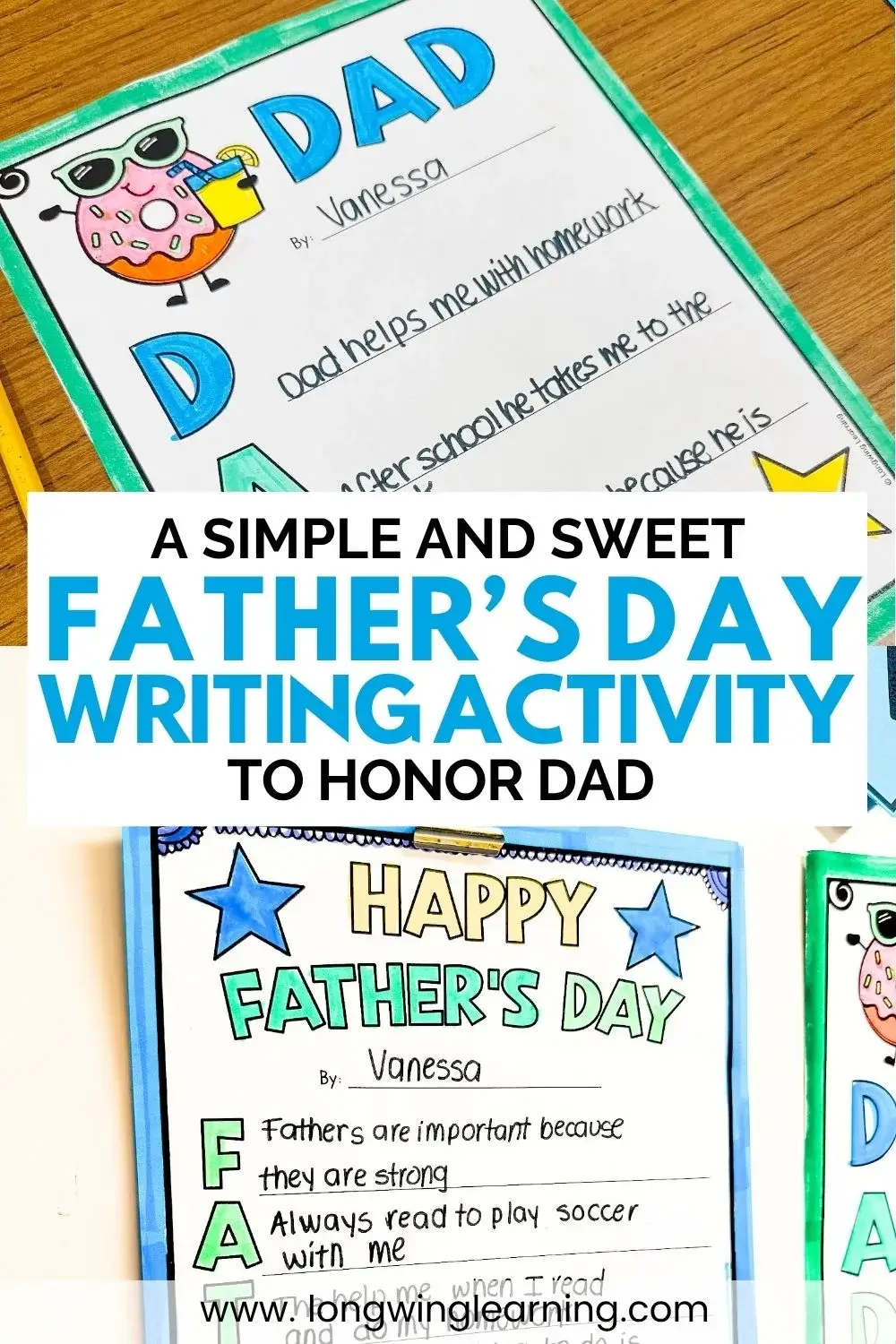Color coding context clues changed everything for my students. By pairing each clue type with a specific color, I made the abstract visible, and suddenly, vocabulary lessons clicked.
In this post, I’ll show you exactly how I use color coding context clues to build awareness and confidence in upper elementary readers.
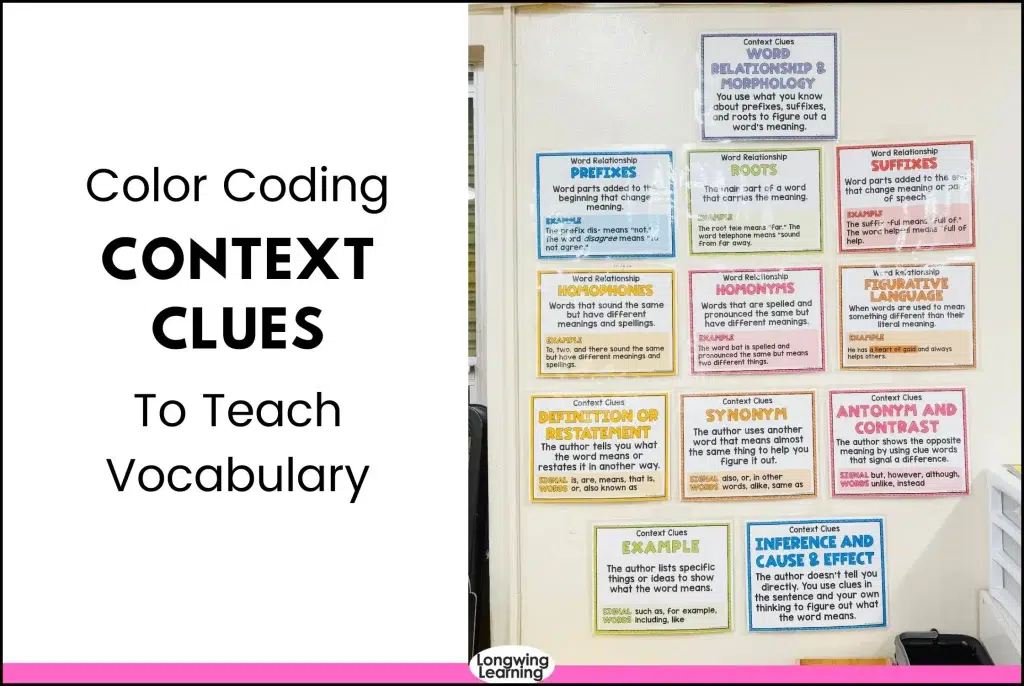
If there’s one school supply that has magical teaching powers, it’s a pack of multicolored highlighters.
Sure, they’re fun to use. But in my classroom, they’re also a vocabulary strategy tool, especially when it comes to teaching context clues.
After years of watching students struggle with inferring the meaning of unknown words, I realized that telling them to “just look around the word” wasn’t cutting it.
So I decided to teach the six types of context clues explicitly, and I used color coding as my scaffold.
The result?
A dramatic shift in how my students approach unfamiliar words, from the struggling readers to the high-flyers.
In this post, I’ll walk you through how I teach this color coded strategy, why it works so well, and how you can use it tomorrow in your own classroom.
Why I Started Color Coding Context Clues
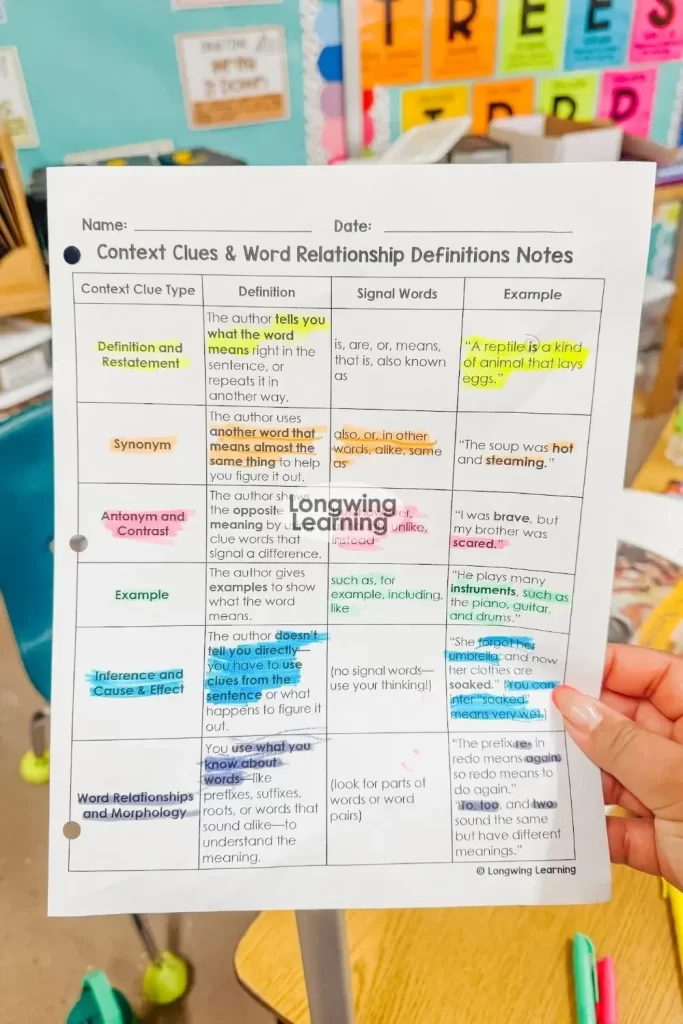
My students love visuals. They also thrive with routines.
We already used color coding in our writing instruction (like using green for topic sentences, yellow for supporting details, etc.) and it was working.
So I thought, why not roll that over into vocabulary too?
That’s how I started using color coding to teach the six types of context clues.
It was student-inspired and solution-driven, and honestly?
It changed everything.
Color coding context clues became part of our daily reading practice.
The Color System I Use for Each Clue Type
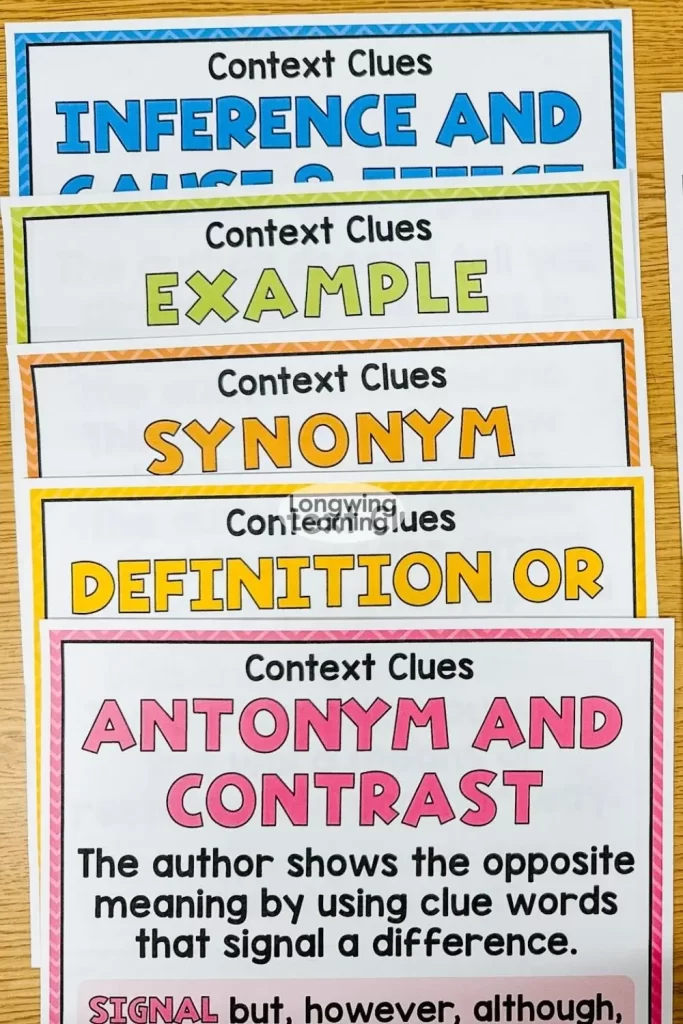
To keep it simple and memorable, I use one color per clue type.
Here’s my system:
| Clue Type | Highlighter Color |
| Synonym | Orange |
| Antonym / Contrast | Pink |
| Definition / Restatement | Yellow |
| Example / Illustration | Blue |
| Word Relationship | Green |
| Morphology (Prefixes, Suffixes, Roots) | Purple |
Tip: Match the colors on your posters and student notes page for consistency. Visual reinforcement is key!
How I Introduce Color Coding to Students

I always launch this with a whole group lesson.
I use my Context Clues Notes Sheet and go through each clue type one at a time.
We define it, read an example, and practice highlighting both the word and the clue in the assigned color.
This is NOT a one-and-done lesson.
The goal of the color coding is not to identify context clues on a test.
It’s to help students build awareness of the different types of clues, and to eventually analyze how those clues help construct meaning.
I always tell them:
“You won’t always need your highlighters. This is your training wheels stage. Once you’re steady, you’ll know what clue types are without them.”
How I Use It Across My Literacy Block
I weave context clue work throughout my reading week, not as an “extra,” but as part of our reading routine.
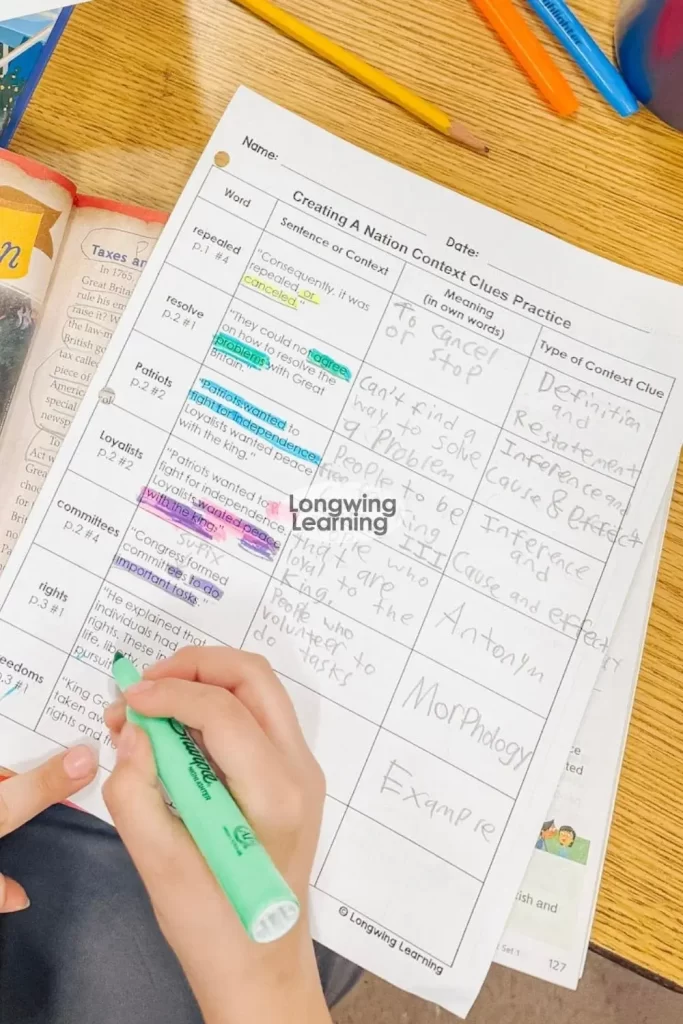
Here’s where we use the strategy:
| Setting | How We Use Color Coding |
| Whole Group | Anchor charts, guided practice with story vocabulary |
| Small Group | Highlighters + pencil for guided highlighting |
| Independent Reading | Students use pencil annotations or highlight as they find clues |
| Centers | Practice pages, context clue sort cards, or journal reflections |
| Notebooks | We shrink the reference sheet to 80% and glue it in composition notebooks |
| Test Prep | We review question stems and identify the type of context clue as part of our second read |
When I plan my reading lessons, I look at our weekly selection and pull out 4–5 words that lend themselves to practicing context clues. I don’t rely on the basal alone; I look for meaningful vocabulary moments tied to the story.
Sometimes I target word relationships. Other times, it’s all about morphology.
It depends on the text, and that’s part of what keeps the strategy dynamic.
Tips for Managing the Highlighter Hype
Let’s be honest, give a kid a highlighter, and they’re going to want to highlight everything.
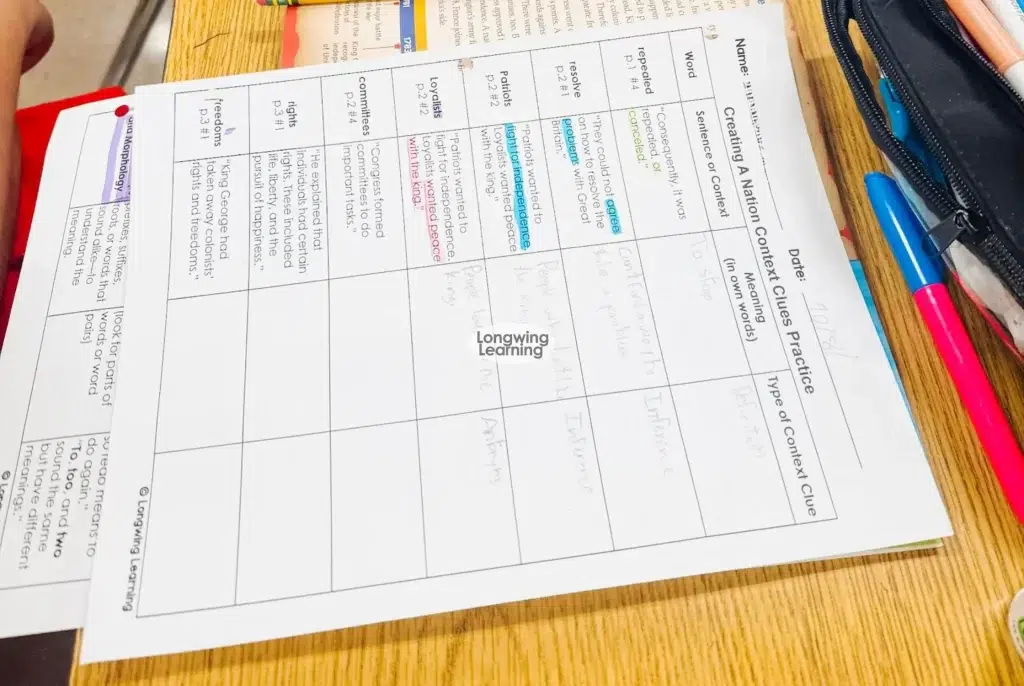
So I set clear expectations early on:
- In whole group, we discuss and annotate with pencils first.
- In small group or intervention, we bring out the highlighters to reinforce and self-check.
Students say things like:
“This word has an antonym clue!”
“It says or, so it’s a definition.”
“The prefix pre- tells me it means before.”
Even my students who typically struggle with comprehension light up during these lessons.
They know what to look for. And that makes all the difference.
Why It’s More Than Just Identification
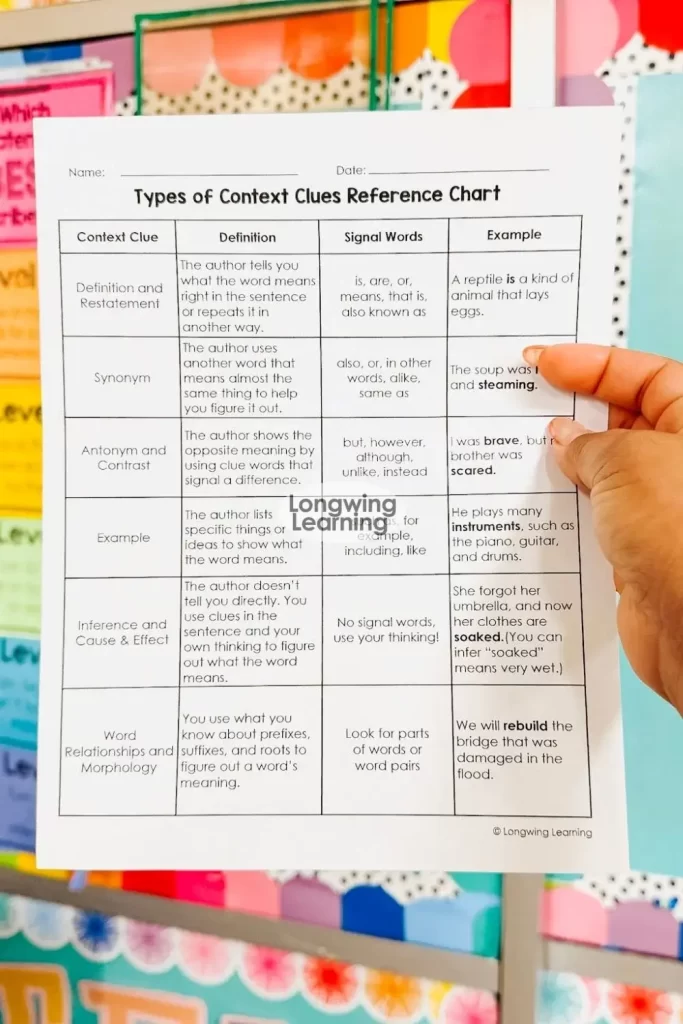
Eventually, the colors fade into the background.
The goal is not rainbow highlighting all year, but building internal strategies that students carry with them.
Instead of just asking “what does this word mean?” I ask:
- What context clue helped you?
- What type of clue was it?
- How does it help you understand the tone or the author’s purpose?
This bridges beautifully into state testing expectations and deeper comprehension responses.
Download the Color Coding Context Clues Sheet
Want to try this with your class?
Download my Context Clues Student Notes Page—it’s the reference tool we use to introduce each type and start color coding with confidence.
It includes:
- Definitions
- Clue-type examples
- Matching highlighter color key
Explore the Context Clues Posters Set
Want to bring this system into your classroom?
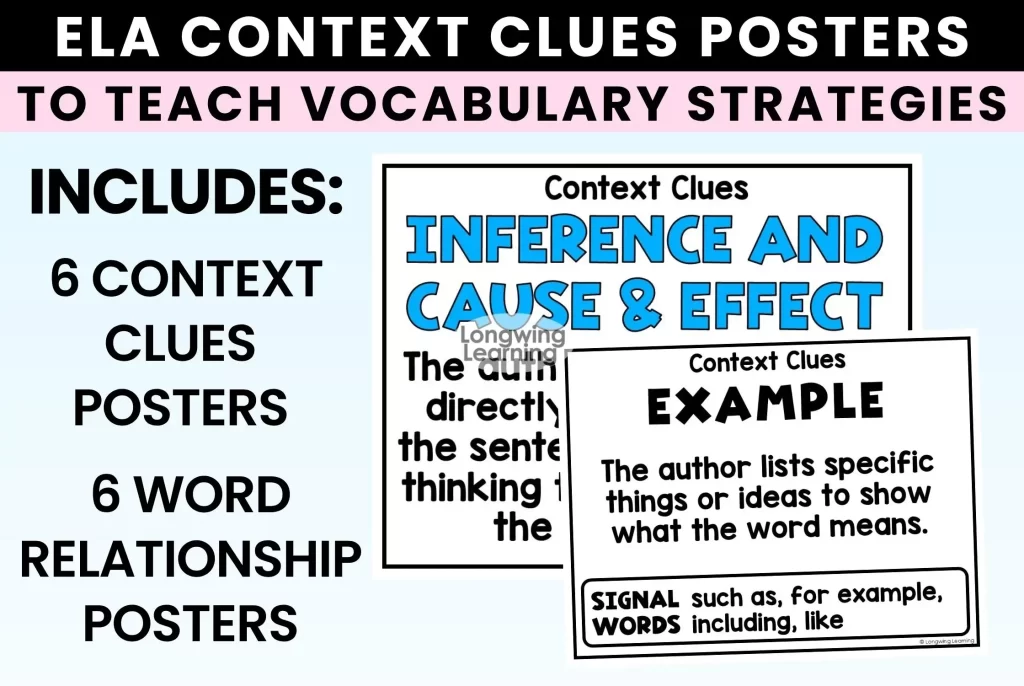
Check out my Context Clues Poster Set with:
- Full-color clue-type visuals
- Editable versions
- Color-coded formats to match this strategy
- Student handouts and print-and-go display pieces
Also available:
Everything connects to build strong, independent readers.
Want to Keep Going? This Post Is Part of My Vocabulary Series
Vocabulary doesn’t have to be boring. With a few highlighters and a consistent scaffold, you can teach students to see the structure of meaning in any text.
Whether you’re introducing context clues for the first time or looking for a way to support struggling readers, color coding is a simple but powerful way to bring vocabulary instruction to life.
Try it with your next reading selection and watch your students glow.
This post is the third in my Context Clues Blog Series; check out:
- Types of Context Clues
- How to Explicitly Teach Context Clues
- Why morphology matters
- Analyzing the author’s word choice
Pin this post, share with your team, or tag me on Instagram @longwinglearning if you use it in your classroom!
